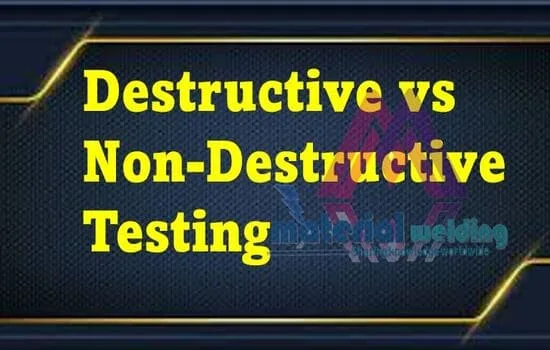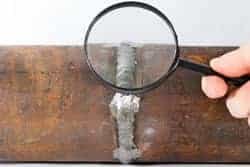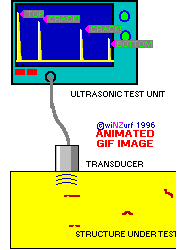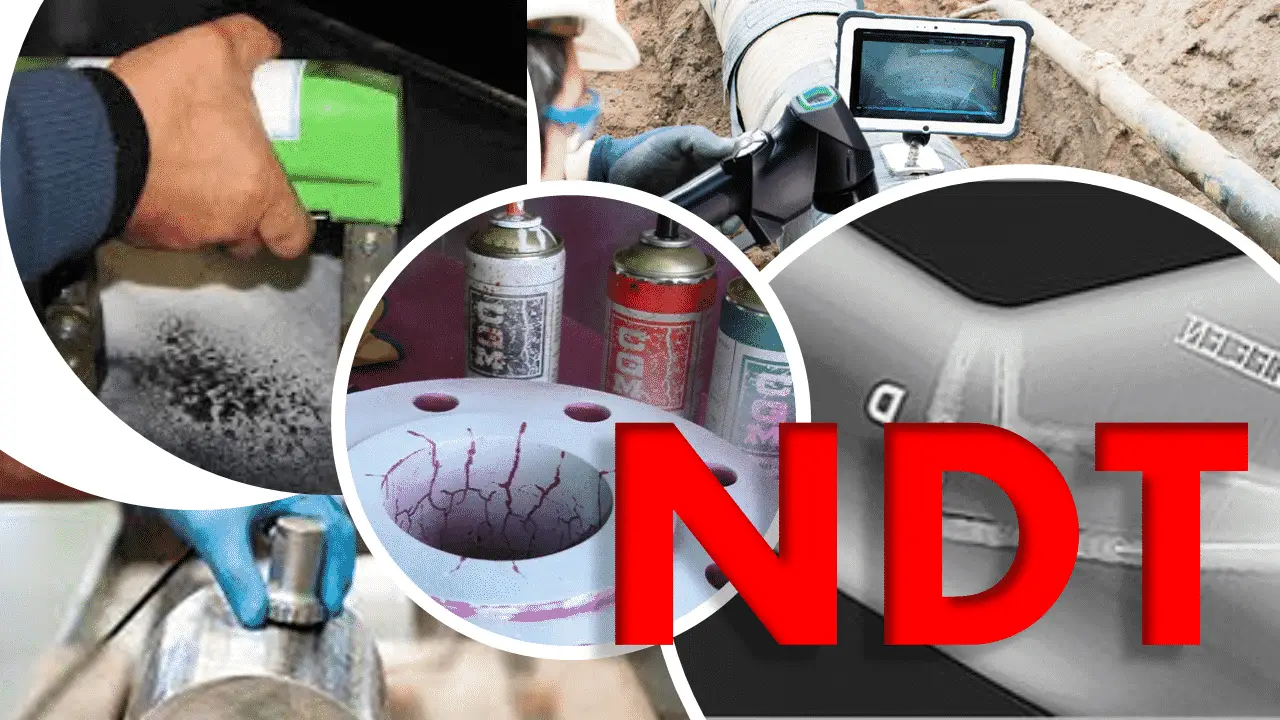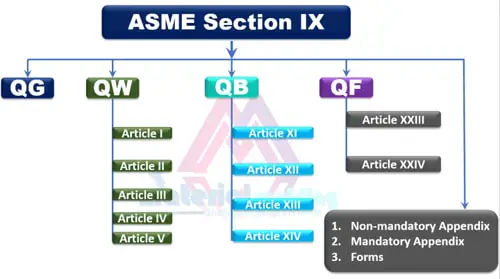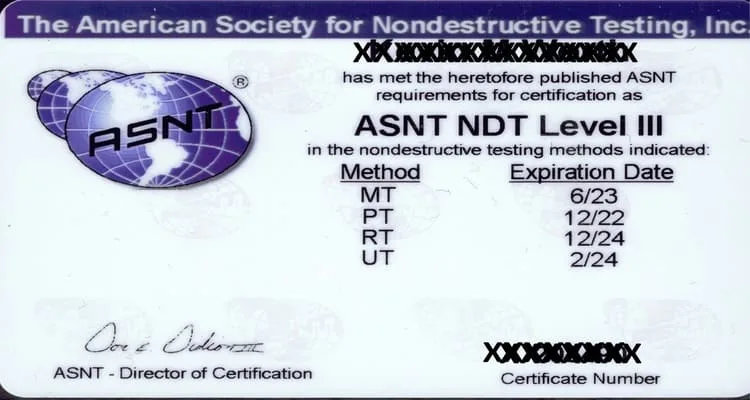Dye penetration testing is a non-destructive approach typically used in various industries to identify imperfections in materials that may be indiscernible to the naked eye. It offers reliable, cost-effective, and minimally intrusive testing of different materials, playing a crucial role in ensuring their quality and safety.
This discussion will immerse you in the fundamental concepts of dye penetration testing, the meticulous procedure involved, factors affecting the selection of the dye, and the benefits and constraints of this method.
By providing real-world examples and case studies, the information will further illuminate the practical applications and efficacy of dye penetration testing.
Basics of Dye Penetration Testing
Overview of Dye Penetration Testing
Dye penetration testing, also referred to as liquid penetrate inspection or dye penetrant inspection, is a non-destructive method used for detecting flaws such as cracks, fractures, or leaks in materials.
This type of testing is prevalent in industries where the integrity of materials and structures is of utmost importance. It’s frequently performed on metals, plastics, ceramics, and other non-porous surfaces.
Purpose of Dye Penetration Testing
The main purpose of dye penetration testing is to reveal defects in various materials that might not be visible to the naked eye. These could be surface-breaking defects like porosity, hairline cracks, seams, and leaks. This type of inspection helps in ensuring the safety and reliability of multiple structures and components, contributing significantly to the fields of quality control and safety management.
Working Mechanism of Dye Penetration Testing
Dye penetration testing works by applying a colored or fluorescent dye to the surface of a specimen. The dye sinks into any surface-breaking flaw, such as cracks or fractures. After a defined dwell time, the excess dye on the surface is removed.
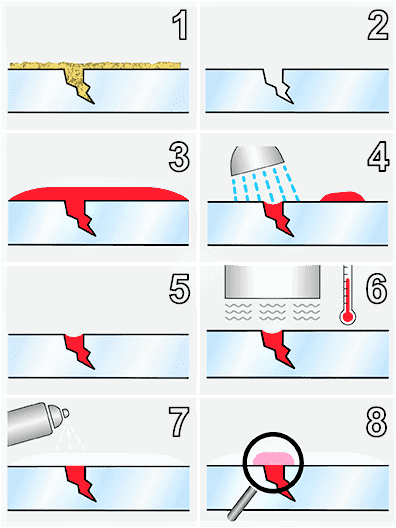
A developer, typically a chalk-like material, is then applied to draw out the dye from inside the flaws, making them recognizable to an inspector. If flaws are present, the dye appears as vivid lines on the surface, which are further analyzed for their characteristics and severity.
Industries Utilizing Dye Penetration Testing
The application of dye penetration testing spans several industries that require meticulous material inspection for maintaining safety and efficiency. The most common industries utilizing this method are:
- Aviation and Aerospace: To check for defects in engine components, landing gears, and airframes.
- Automotive: To examine critical components like brake assemblies, steering systems, and fuel delivery systems.
- Manufacturing: To identify defects in metalwork, welds, and castings.
- Oil and Gas: To inspect pipelines, pressure vessels, and other equipment for leaks or fractures.
- Power Generation: To detect defects in steam turbines, generators, and other power equipment.
Dye Penetration Testing: A Key to Quality Assurance
Quality assurance procedures often involve the use of dye penetration testing, a non-destructive method exploited for ensuring product safety and reliability. Promptly spotting and amending defects allows operators and manufacturers to steer clear of potentially damaging issues or failures.
This preservative approach aids in boosting the overall efficiency of operations and augments safety, while also leading to considerable cost savings.
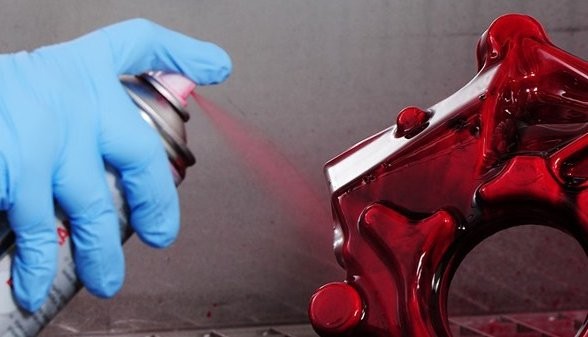
Procedure for Dye Penetration Testing
Grasping the Fundamentals of Dye Penetration Testing
As an essential component of non-destructive testing, dye penetration testing serves as an operative tool for revealing surface imperfections or cracks on non-porous metallic substances that might remain hidden from the naked eye. It is quite prevalent within sectors such as aerospace, automotive and petroleum, where the preservation of material integrity holds significant importance.
The Initial Stage: Surface Cleaning
The dye penetration testing process begins with an in-depth surface cleaning. This step is vital as it removes any oil, dust, grease, or dirt that could interfere with the effectiveness of the dye. While various cleaning solutions can be used to clean the surface, it’s essential that the cleaning agent used does not result in harmful reactions with the material or the dye.
Application of the Dye
The second step in the process involves applying the dye. The dye, generally a vivid color like red or fluorescent for easy detection, is sprayed or brushed onto the surface. It should adequately envelop the area being tested. After application, the dye is left to dwell on the base material for a specific time period.
Removal of Excess Dye
Post dwell time, any excess surface dye is delicately removed without intruding into any potential surface-breaking indications. This can be done using a dry lint-free cloth. It’s important to avoid using solvents at this stage as they can inadvertently wash the dye out from defects or cracks.
Developer Application
Next, a developer is applied to draw out the dye from any cracks or defects. This action produces a stark contrast against the dye, thereby highlighting any faults present on the surface. It works by absorbing the dye that has permeated into any faults or discrepancies on the surface.
Final Inspection and Interpretation
The final step in the dye penetration testing process is the inspection of the materials. The professionals conducting the test will examine the surface, often under ultraviolet light, to better see any areas where the dye has “bled out” into the developer. The bleeding provides visible proof of defects, cracks, or discrepancies. The results of the test inform subsequent decisions, such as repairs or rejection of the material.
Understanding the Precision in Dye Penetration Testing
Dye penetration testing is a procedure that calls for extreme precision and careful attention to detail at every stage. From initial surface cleaning to final assessments, each step must be meticulously executed by trained specialists. Any minor misstep could possibly lead to inaccurate results, making it crucial to understand and maintain the high level of precision needed throughout the process.
Considerations in Choosing a Dye for Testing
Choosing the Perfect Dye for Penetration Testing
This intricate testing method is typically employed to identify flaws such as surface and subsurface skin cracks, laps, pinholes, and porosities in a variety of materials. It involves the usage of a penetrative dye. This dye seeps into the detected defects, effectively visually highlighting them under suitable lighting conditions. Therefore, the success of this testing procedure heavily depends on the correct choice of dye, as it plays a pivotal role in flaw detection.
Material Type
The material undergoing testing is the first significant factor to consider when selecting the corresponding dye. The nature of the material dictates the choice of the dye. For example, while red dye is typically used for metal parts due to its high visibility, fluorescent dye, ideally observed under ultraviolet light, is selected when testing on less transparent materials, thus enhancing visibility regardless of the material’s inherent characteristics.
Dye Characteristics
Another crucial factor when selecting a dye involves the dye’s intrinsic properties. The dye’s ability to penetrate the material, also known as its wetting ability, plays a vital role in detecting surface flaws. The viscosity of the dye also matters – a dye with low viscosity is generally used as it can seep into the tiniest of cracks, boosting the efficiency of the test. In addition, the dye should have good washability which ensures it can be removed after the test, preventing staining or discoloration of the material.
Test Conditions
The conditions under which the test is conducted also influence the choice of dye. For example, if the test is performed outdoors and exposed to various weather conditions, a waterproof dye could be more beneficial. Lighting conditions are crucial too; as mentioned, fluorescent dyes work best under ultraviolet light. Time is another important consideration, as some dyes require a dwell time to ensure effective penetration.
Importance of Accurate Dye Selection
The right dye selection can make a significant difference in the accuracy of the results obtained from the dye penetration testing. It can correctly identify defects that would have been otherwise overlooked, thereby ensuring the reliability and safe usage of the material under inspection. Failure to select the appropriate dye can result in inconclusive or inaccurate results, leading to potential risk when the material is in use.
The process of selecting the correct dye for a dye penetration test is not a simple or arbitrary decision, but rather a thoughtful process that includes consideration of various factors. With the right dye, the dye penetration test can yield accurate and trustworthy results.
Benefits and Limitations of Dye Penetration Testing
Why Dye Penetration Testing is Beneficial
One of the standout advantages of Dye Penetrant Inspection (DPI), also known as dye penetration testing, is its non-destructive and straightforward methodology. The process involves applying a colored or fluorescent dye onto the material being tested. This dye then seeps into any surface-breaking defects. As a developer is added to the material, it draws out the dye from these defects, allowing for clear visibility of any potential issues.
Not only is DPI user-friendly due to its minimally invasive nature, but it is also cost-efficient. In comparison to other non-destructive testing (NDT) methods, DPI does not require a large investment and is conveniently portable. This makes DPI a preferred choice in various fields and diverse working environments. It is often applied to inspect large quantities of components or parts, and is notably useful for routine maintenance inspection of big structures or equipment.
The Limitations of Dye Penetration Testing
Despite its various advantages, dye penetration testing does have limitations. One significant drawback is that DPI can only detect defects that are open to the surface of the test material, such as cracks or welds. This means that underlying deficiencies, subsurface flaws, or defects that are not directly accessible from the surface can go undetected using this technique.
Moreover, this technique is not suitable for materials with extremely rough surfaces or porous materials, since these conditions can lead to false positives due to dye residuals. In addition, the cleanliness of the test material can significantly affect the test outcomes.
Additionally, DPI can only provide qualitative information about the presence of defects, but cannot quantify the depth or the severity of the flaw. Other techniques may be necessary to gain a complete understanding of the material’s integrity.
Understanding and Navigating Limitations of Dye Penetration Testing
Dye penetrant testing, though powerful, may not always be the right tool due to its inherent limitations. Certain surfaces, like those that are rough or porous, may lend themselves better to alternative inspection methods. In such circumstances, options like magnetic particle inspection could provide better results, with their capacity to detect both surface and minor subsurface discontinuities. Also, if one suspects defects buried deep within the material, methods like ultrasonic testing or radiography, which penetrate far into the material, are more suited.
In situations where quantitative data about the flaw’s depth or severity is required, eddy-current testing, for example, can be employed. Therefore, while dye penetrant testing is indeed a cost-effective and easily applicable NDT method, it’s critical to keep its constraints in mind and resort to alternate methods when necessary.
Examples and Case Studies of Dye Penetration Testing
Dye Penetration Testing: A Proven Technique for Surface Defect Identification
Despite its limitations, dye penetration testing, also known as dye penetrant inspection (DP), is relied upon by various industries for identifying surface-bound defects in different materials. This non-destructive testing method holds particular importance in fields like aircraft maintenance and automotive manufacturing.
Notably, the method played a pivotal role in safeguarding the integrity of the Delta IV Heavy rocket. This famed vehicle, which launched surveillance satellites for the United States National Reconnaissance Office, relied on dye penetration testing for scrutinizing its outer surface for any potential fissures or cracks.
Even the smallest flaw could result in devastating outcomes during takeoff. As such, dye penetration testing was instrumental in ensuring the secure deployment of vital spy satellites.
Using Dye Penetration Testing in the Medical Field
In the medical device industry, dye penetration testing is essential for ensuring the reliability of medical equipment. An illustrative case involves the manufacture of prosthetic hip joints. These implants must bear several years of intense mechanical stress while exposed to harsh physiological conditions.
To ensure the product is void of micro-cracks before implantation, manufacturers use dye penetration testing, which can detect defects as small as 0.02 millimeters. This level of precision not only assures the longevity of the implant but also protects the patient from adverse medical events.
Real-world Application for Bridge Infrastructure
An instance where dye penetration testing made a difference was during the crucial inspections of bridge infrastructure. The Colorado Department of Transportation routinely utilized dye penetration testing to identify hairline fractures in the state’s aging bridges.
If left undetected, these fractures pose significant threats to the structural integrity of these bridges, risking catastrophic fails with potential damage, injury, or loss of life. In 2013, the CDOT made plans to inspect every bridge across Colorado using this testing technique, demonstrating its practical utility.
Assuring Elevator Safety with Dye Penetration Testing
Some high-rise buildings and commercial complexes extensively rely on dye penetration tests to maintain the safety and functionality of their pneumatic vacuum elevators. These unique transportation devices are susceptible to metal fatigue due to constant cyclical loading.
Regular DP testing checks for potential fatigue cracks or other surface flaws that may affect the elevator’s efficiency and safety. This routine inspection equips engineers to trace even invisible defects, ensuring necessary timely repairs.
The Role of Dye Penetration Testing in Aerospace
In the aerospace sector, dye penetration testing takes credit for safely grounding a fleet of F-15 fighter aircraft in 2008. At the time, an F-15 aircraft crash incident occurred due to a defective structural support part.
To avoid repeating a similar mishap, an extensive dye penetration test was performed across the entire fleet of these aircraft. The findings highlighted similar defects in some of the aircraft, which necessitated immediate grounding for repairs. The prompt procedure possibly thwarted further accidents, emphasizing the importance of DP testing in maintaining aerospace safety standards.
These real-world cases underline the significance of dye penetration testing in various fields, emphasizing its indispensability in maintaining safety, preventing catastrophic failures, and safeguarding users’ lives, from everyday devices to complex industrial machinery.
Delving into the fascinating world of dye penetration testing uncovers its remarkable potential in spotting concealed flaws in various items. Having understood its intricacies, procedure, factors affecting dye choice, and advantages and restrictions, it becomes evident how invaluable this technique is.
Furthermore, the provided real-world instances and case studies have showcased the practical usage and efficiency of this method. However, while dye penetration testing is an excellent tool in its own right, it is vital to remember that using a combination of different tests may be necessary to overcome the limitations of this standalone method and to ensure the most reliable and detailed analysis possible.
